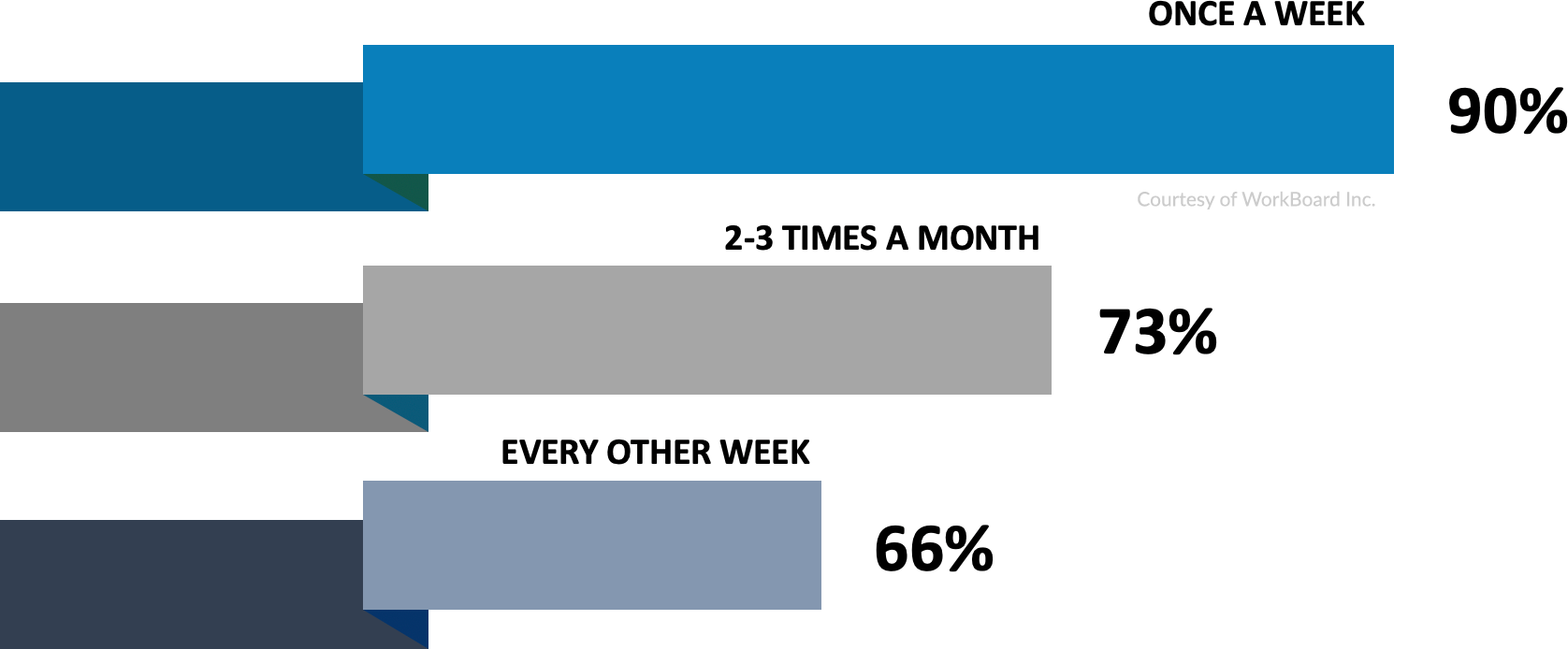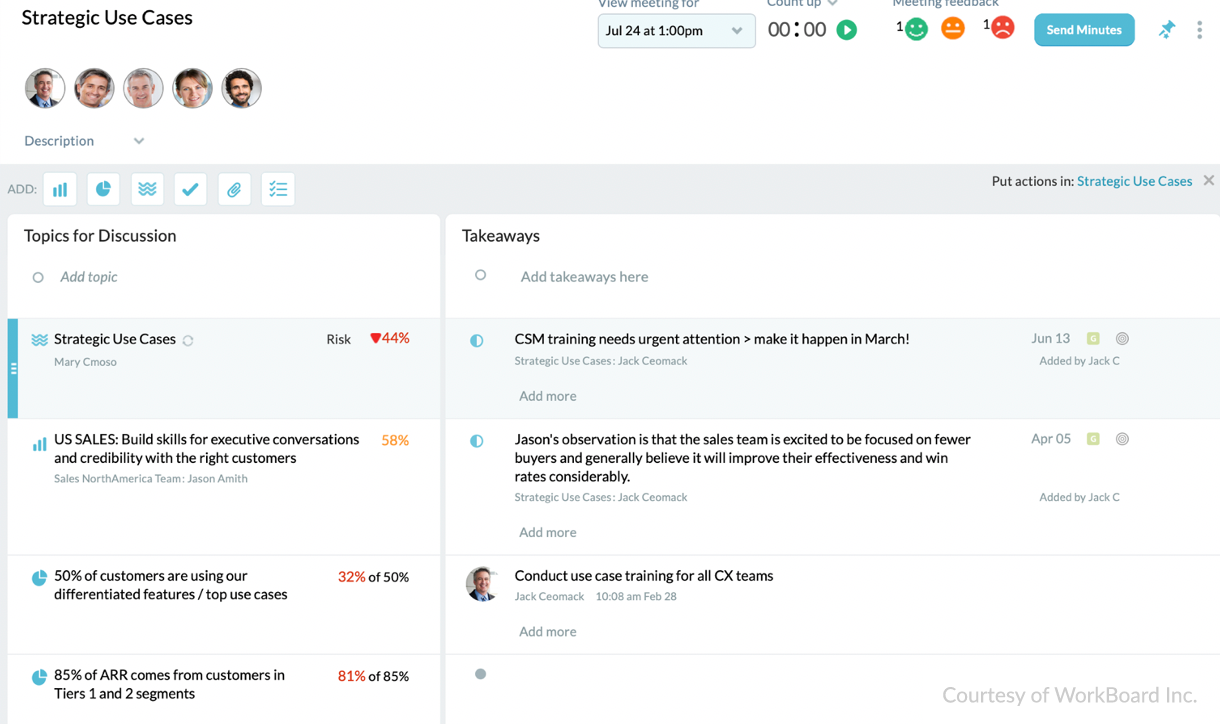
Listen now:
Deidre Paknad, WorkBoard CEO: So you set OKRs, now what? Well, you set them to achieve them. So there's three questions you should ask week to week about your OKRs. The first question is: Where are we now? What's between us and the outcomes we want to achieve and what are the risks and roadblocks that are in our way? And do we have the plan of action and are we executing on those things that will drive those key results?
Teams that start their week by looking at their OKRs generally achieve close to 90% of their key results.
To grow fast you need to manage fast, and your OKRs are what you're managing to. So you want to start the week by looking at the key result you're trying to achieve.
Our data shows that teams that start their week by looking at their OKRs generally achieve close to 90% of their key results, and that's way better than teams that look at their OKRs once or twice a month — they come in around 60% of their key results.

It's a giant difference — almost 30% difference — and it's just a function of where they spend their time over the quarter and how focused they are on the outcomes you’re trying to drive.
As a manager, if you want to manage for results and you want to drive achievement around those, there's three things you should be thinking about. One of those is: make sure that OKRs are on the agenda in your staff meetings and your team meetings.
The second is your ops reviews, your product reviews, your business reviews, all of the management accountability cadences you have should be KR driven. You don't want to be managing to one set of outcomes over here and let your OKR languish over there. You want to integrate those so that the management cadence and model you have is anchored in the key results you're trying to achieve.
Lean into the red. It's the data you need to succeed.
And the next is change up your meeting habits. Instead of showing up at a meeting to be informed, show up at the meeting informed and there to work on the roadblocks and the risks. Don't show up for status. Know the status before you get there.
And you do that by looking it up in WorkBoard and making sure that that's line of sight for you and everyone on your team every day. So you use the meeting time to solve problems rather than to find out where they are and run out of time for solving them.

And then the last piece you want to do to achieve OKRs is lean into the red. As you lose time or you get farther from the key results you're trying to achieve in a quarter, WorkBoard will alert you by showing you red and yellow. Those are signs of what needs your attention. Lean into the red. It's the data you need to succeed. It's the problem you need to tackle and solve.





